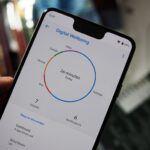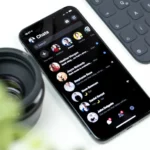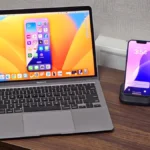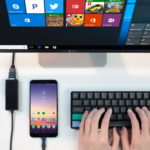To be honest Reviving an Old iPhone is worth a try, every new iOS update tends to make my iPhone feel slightly sluggish.
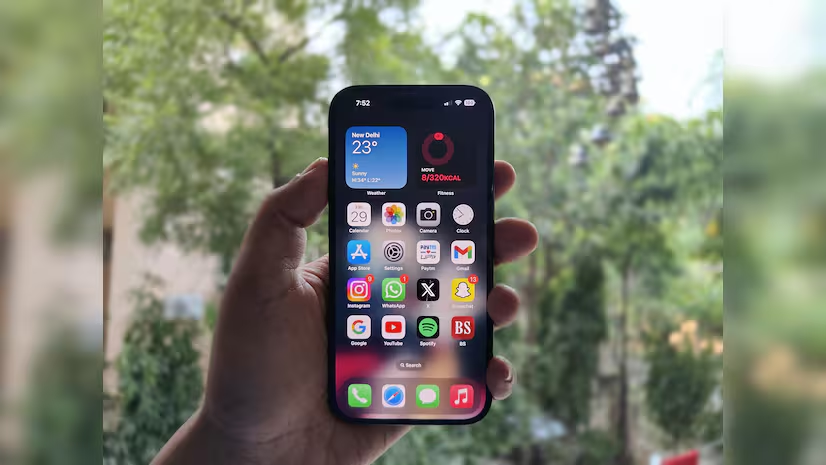
I could always rush out and get the latest model, but why do that when a few simple tricks can rejuvenate my older device?
Free Up Storage by Transferring Data to iCloud
Ample free storage is essential for a smartphone’s smooth operation. My iPhone, with only 128GB of internal storage, led me to upgrade to iCloud+ and choose a 200GB plan.
Now I have plenty of space to offload data without the concern of running out of room.
With plenty of iCloud storage available, I can transfer all my photos and videos to the cloud, enabling me to remove them from my device without any loss.
To ensure this process is smooth, I’ve activated the Optimize iPhone Storage feature. This lets my iPhone maintain smaller, space-efficient versions of photos on the device while securely storing the full-resolution files in iCloud.
Delete Safari Browsing Data
I frequently browse the internet on my iPhone, and over time, browsers such as Safari can slow down because of accumulated cached files, cookies, and browsing history.
Given that so many websites now require cookie acceptance, this data tends to accumulate quickly.
When this occurs, Safari takes more time to load and seems less responsive than it used to be. I’ve discovered that clearing the browsing history and data in Safari can help resolve the issue.
Simply navigate to Settings > Safari > Clear History and Website Data to erase the browser data. Doing so will not only boost Safari’s speed but also free up some additional storage space on your iPhone.
Activate Reduce Motion and Transparency
Despite all the optimizations, it’s still true that my iPhone 12 is over three years old and lacks the fastest processor.
To reduce strain on its processor and ensure smooth operation with the latest iOS version, I’ve discovered that turning off animations and visual effects helps considerably.
To achieve this, go to Settings > Accessibility > Motion and toggle on Reduce Motion. This minimizes elaborate animations such as the parallax effect on the home screen and app transitions, making my iPhone more responsive.
Rather than smooth zooming and sliding effects, apps will simply fade in and out—which may be less flashy but certainly enhances speed.
In the same way, I’ve activated Reduce Transparency by navigating to Settings > Accessibility > Display & Text Size.
This reduces transparency effects in areas such as the Control Center and menus, making them easier to read and less demanding on my iPhone’s processor.
The distinction is subtle yet evident; the menus appear more substantial, and the interface feels generally more responsive.
Turn off Background App Refresh for Apps You Don’t Need
In addition to limiting app downloads, I’ve decided to disable Background App Refresh for apps that don’t need it.
Although this feature allows apps to update data in the background and provide timely notifications, it can also consume significant resources.
Not all of my apps—and definitely not games—require this feature enabled.
To conserve system resources and enhance the performance of my aging iPhone, I disable Background App Refresh for unnecessary apps by navigating to Settings > General > Background App Refresh.
If an app fails to update when opened, I can easily re-enable it; however, in most cases, it’s not missed at all.
Turn off Low Power Mode
Although Low Power Mode is excellent for extending the iPhone’s battery life, it can noticeably slow down performance.
Before I replaced my battery, I used it every day to get through the afternoon, but this came at a cost of reduced speed and efficiency.
With a new battery, I no longer need to keep Low Power Mode enabled constantly.
The result? My apps can run freely in the background, scrolling is smoother, and my phone feels much snappier overall.
It reminded me that while Low Power Mode is great for emergencies, keeping it on constantly was limiting my phone’s performance.
It’s easy to think an iPhone is finished after a few years of updates, but it can still perform impressively with the right modifications.
After installing a new battery, clearing up storage space, and making some clever adjustments, my iPhone now feels faster, more dependable, and ready to last several additional years.
Conclusion
The author shares tips to rejuvenate an older iPhone with the latest iOS updates.
They suggest freeing up storage by transferring data to iCloud, deleting Safari browsing data, adjusting the settings in Safari, reducing motion and transparency, disabling Background App Refresh for unnecessary apps, and turning off Low Power Mode.
The author upgraded to iCloud+ and chose a 200GB plan, allowing them to transfer photos and videos to the cloud without loss.
They activated the Optimize iPhone Storage feature to maintain smaller, space-efficient versions of photos while securely storing full-resolution files in iCloud.
To improve Safari’s speed and free up storage, they cleared browsing history and data in Safari by navigating to Settings > Safari > Clear History and Website Data.
They also turned off animations and visual effects to make the iPhone more responsive. Finally, they turned off Low Power Mode, which can slow down performance.
They installed a new battery, cleared up storage space, and made adjustments, resulting in a faster, more reliable iPhone ready to last for years to come.


